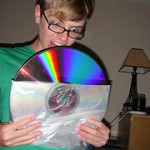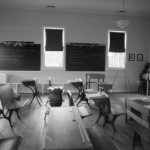This week’s activity and reading concentrated on T-GEM a learning design in which technology (T) is integrated in a student process of Generate – Evaluate – Modify (GEM). To date there are 240+ posts in our Chemland Forum. Of all the posts that I read (the majority), not one post provided a negative perspective. This week’s contributions were both enjoyable and enlightening. During the previous weeks we explored technology learning designs/environments that were multi aged in design (WISE – MyWorld – Chemland) but were far from having the flexibility offered by T-GEM.
We read about a chemistry teacher applying T-GEM using computer simulations. The cohort explored the computer simulations of Chemland took their experience and learnings and began to create T-GEM lessons differentiated to fit the needs of their students real and imagined. The variety of developed lessons was startling. For myself, it was best for me to peruse the lessons within my own conceptual grasp – a good reminder for any teacher that new learning needs to be in the zone of proximal development for the student young or old.
T-GEM was used to develop learning opportunities ranging from counting to quadratic equations and from states of matter to photosynthesis. GEM can be applied to any learning in a the math and science classroom and can be applied for any developmental/grade/age level. A teacher can take the intent of GEM and create his or her own lessons (as was evidenced in the shared lesson plans). As I read more and more of the posts (choosing those that applied to my area of interest and need), I began to realize that GEM was a design that I had, at times, inadvertently incorporated into lesson design and/or was present in some of the lessons and activities that over the years have been among my most favourite.
Now myself and other cohort members can purposefully employ GEM rather than accidentally stumble upon it. When I work with teacher learning groups, I talk about the importance of having students bump up against new learning and the need to provide students with opportunities for their beliefs and understandings to be conflicted. It’s GEM!
On Tuesday afternoon I lead twelve math teachers through the third of six inquiry sessions. I am excited to take to the next numeracy learning session this week’s 533 learning and the contributions, sharing, and reflections of my 533 colleagues.
Khan, S. (2007). Model-based inquiries in chemistry. Science Education, 91(6), 877-905.
Khan, S. (2010). New pedagogies for teaching with computer simulations. Journal of Science Education and Technology, 20(3), 215-232.










